Mastering Wind Direction for Surfers: Key Techniques
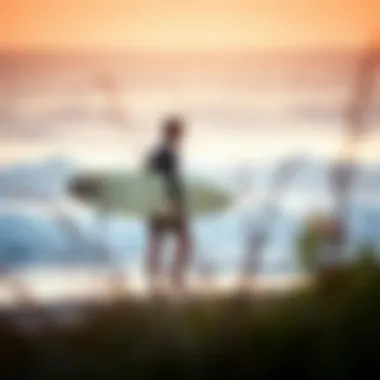
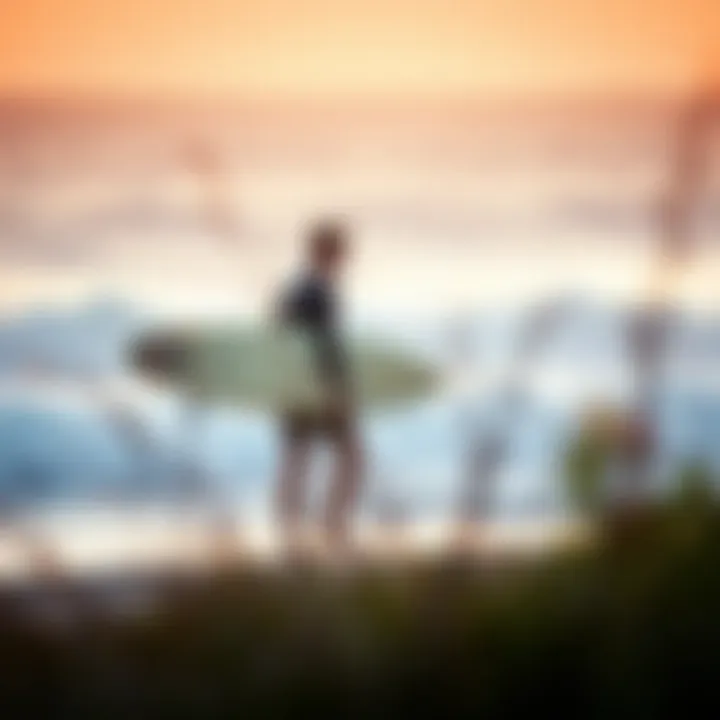
Intro
Understanding wind direction is a crucial skill for surfers, as it directly influences wave conditions. For those who are just starting out or those seasoned in the waves, knowing how the wind behaves can be the difference between a stellar day and one spent battling unwanted conditions. In this guide, we will dive into both traditional and modern methods of gauging wind direction, catering to surfers of every stripe, whether you are a grom looking to catch your first wave or a pro working on that elusive trick.
Wind direction affects not only the quality of the surf but also how waves break, making it vital for surfers to learn how to read the signs nature presents. By paying attention to local geography and utilizing various tools, surfers can significantly enhance their waves riding experience. From the rustle of leaves to high-tech anemometers, we will cover it all.
Techniques and Tips
Key Observations for Beginners
Being attune to the natural world is foundational for any surfer. Here are a few simple techniques to help you develop your observational skills:
- Watching the Trees: Tall trees often offer clues. If branches sway gently toward a specific direction, the wind is likely moving in that same path.
- Sea Surface: A choppy sea surface indicates stronger winds, while calmer waters during periods of light wind often suggest the possibility for good surf.
- Wind Flags: Public beaches often have flags or designated wind barriers that can serve as indicators. Take note of these as they can guide your decisions.
More Advanced Indicators for the Experienced Surfer
For those who have honed their skills, understanding more subtle indicators can make a world of difference:
- Cloud Patterns: High or low-pressure systems, detected through cloud formations, can anticipate wind changes. Look for cumulus clouds during a typical sunny day, as their presence can denote humid air mixing with colder layers, leading to wind shifts.
- Breaking Waves: Observing how and where waves crisply break can help you decipher wind direction. Generally, waves may break into the wind, creating more surfable opportunities on the leeward side.
- Windy Days: On particularly windy days, finding sheltered areas can yield smaller and more manageable waves, ideal for practicing those difficult maneuvers.
Gear and Equipment
Understanding wind patterns and how they change is indispensable, but complementing this knowledge with the right gear can ensure you are ready for whatever the sea throws at you.
Essential Equipment for Wind Awareness
While surfboards are the stars of the show, consider these items as valuable companions for optimal performance:
- Anemometer: Handy devices like the Kestrel 3000 can measure wind speed and direction with precision. This tool can be especially useful when planning longer surf sessions.
- Wetsuwitsuit or Rash Guard: Investing in quality gear like the O’Neill Psycho Tech wetsuit protects you from elements while allowing for maximum mobility.
- Leash: A proper leash, such as the Dakine Leash, won't only keep your board close but also helps you gauge changes in waves, maintaining safety.
Accessories that Make a Difference
Let’s not forget the essential accessories:
- Sunglasses with UV Protection: Keeping those peepers safe from glare on bright sunny days is key.
- A Surf Cap: When conditions stir up things a bit, a good cap can keep the sun off your face while you focus on catching waves.
By solidifying your understanding of wind direction through observation and practice, coupled with a solid gear setup, you’ll find yourself riding waves with more confidence and skill. Surfing is not just about the thrills -- it's an intricate dance with nature, one that rewards those who are willing to listen and learn.
Prologue to Wind Direction Importance in Surfing
Understanding wind direction is crucial for surfers who aim to ride optimal waves. Surfers intuitively appreciate that wind doesn’t just whisper across the ocean; it plays a pivotal role in shaping wave formation. Grasping the nuances of wind can significantly impact the surfing experience. From selecting the right time to hit the beach to reading the ocean like a seasoned sailor, mastering wind knowledge is essential.
To start, let’s explore the basic principles of wind, including how it is created and its general behavior over water. Many might think of wind as just a breezy annoyance or a pleasant day at the beach, but its dynamics are far more complex than that. Riding the waves is an art, and every artist needs to understand their tools. For surfers, wind direction becomes one of those essential tools. Whether you are just catching your first wave or you’re a seasoned pro seeking the perfect barrel, knowledge of wind can unlock better surfing conditions.
Understanding Wind Basics
Wind is essentially the movement of air from areas of high pressure to areas of low pressure. It acts as an invisible hand that can mold the surface of the sea, creating conditions that surfers either cherish or try to avoid. The strength and direction of the wind can bring about significant changes in the water’s surface and wave characteristics.
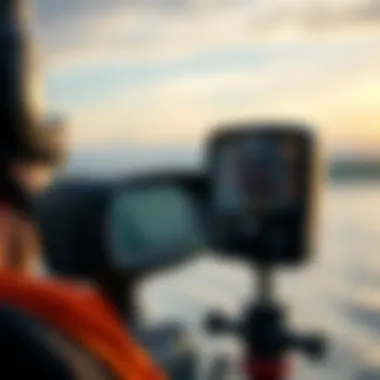
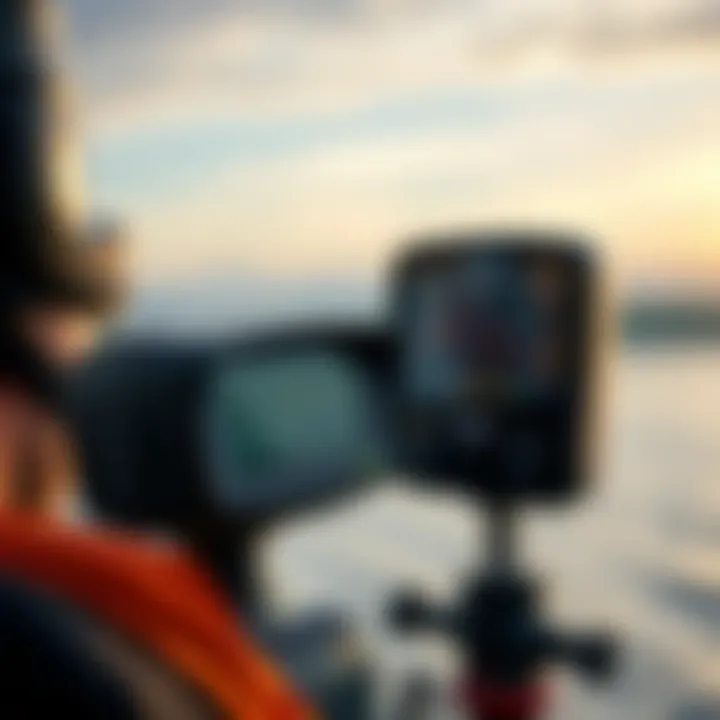
- Onshore Winds: These winds blow from the sea towards the land. Generally, they create choppy waters but can help produce decent waves in certain conditions. They tend to favor beginners as they may provide more forgiving waves, but can equally diminish swell size.
- Offshore Winds: These come from land and blow towards the sea. They are often celebrated by surfers, as they smooth out the surface, allowing for cleaner waves. An offshore breeze can help hold up a wave, creating longer rides, perfect for those looking for some serious fun.
- Cross-shore Winds: These winds blow parallel to the beach and can create unpredictable surf conditions. Depending on their strength, they can either enhance the wave shapes or make them messy and hard to ride.
Impact of Wind on Wave Formation
The relationship between wind and wave formation is intricate and crucial for surfers to understand. Wind does not merely affect the water's immediate surface; it has a longer-reaching influence on how waves are created, shaped, and function. For instance, waves are initially generated by wind energy transferring onto the water. As a result, the wind speed, duration, and fetch—the distance over which the wind blows—are vital in determining the size and quality of waves.
The fetch is especially noteworthy; a longer fetch usually translates to bigger waves, provided wind speed and duration are adequate. To illustrate, consider the stunning sets that surfers chase. The wind’s energy pushes the water into swells, and as they travel toward the shore, they gather strength. When these swells hit shallow waters, they rise, break, and form into the waves surfers love.
Thus, understanding how wind interacts with the ocean equips surfers with the knowledge to optimize their time in the water. Riding a wave formed by perfectly timed and directional wind can mean the difference between merely having fun and experiencing the set of your dreams. Whether you are scoping out a new beach or heading to your favorite spot, keeping an eye on the wind conditions can enhance your surfing experience tremendously.
Natural Indicators of Wind Direction
Understanding natural indicators of wind direction proves invaluable for surfers aiming to catch the best waves. These indicators are not merely for show; they deliver insights that can be essential for selecting the right surfing conditions. Observing the environment allows surfers to grasp patterns in the wind that might otherwise be overlooked, particularly for those who operate without high-tech tools.
Natural indicators can be leveraged effectively to make split-second decisions while out by the sea. Relying on these signs, surfers enhance their connection to their surroundings and strengthen their skills in reading the ocean's moods. Let's break down some of the most effective natural indicators.
Observing Cloud Movement
Looking up at the sky can sometimes tell you more than one might expect. Clouds are not just part of the weather backdrop; they can be significant messengers about wind direction. On a day intended for surfing, you might find that high, wispy clouds known as cirrus and cumulus clouds drift across the sky in a specific direction due to the prevailing winds. Observing their movement can guide your understanding of winds at the surface level.
An old sailor's saying goes, "When clouds look like sheep, expect a wind on the creek!" This captures the essence of using cloud patterns to predict the winds—so pay attention. If you notice that low, dark clouds build up in one area, it may indicate a change in wind strength, potentially impacting wave quality.
Watching the Water Surface
Keeping an eye on the water surface offers immediate clues about wind activity. The state of the water can act like a language unto itself, where calm surfaces speak of light winds, and rippled waters indicate stronger gusts. Recognizing wave patterns can point surfers towards surf spots with optimal conditions.
When the water surface starts to change, often forming small whitecaps, that’s a sure sign of increasing wind speed. If you're out there, spotted winds from a particular direction cause the wave to have a unique shape, and that kind of wave might be your golden ticket to a fantastic ride.
"Watching the water lets you decipher the wind's whispers before it roars."
Utilizing Vegetation as a Guide
Look around you; nature often knows what it's doing. Trees and grass can serve as excellent guides for determining wind direction. Those waving palm fronds and the position of branches tell a tale about which way the wind's blowing. Just like clouds, vegetation reflects current weather conditions. The stronger the movement in trees, the more likely the wind is picking up.
In coastal areas, studies show that the orientation of grasses across the dunes can reveal consistent wind trends, and experienced surfers learn to read these signs, finding success rooted in observation and practice. A single glance at the sway of the foliage can aid in deciding whether to hit the waves or pause for another day.
Engaging with these natural signs shapes our understanding of wind dynamics in surfing, demonstrating that a surfer is as much part of the ocean as the waves themselves.
Instruments for Measuring Wind Direction
Understanding wind direction is paramount for surfers aiming to catch the best waves. While relying on natural indicators is one approach, using specific instruments can provide more precise information. Tools for measuring wind direction not only enhance your surfing experience but also help in planning your sessions, allowing you to ride the waves when the conditions are just right. Here's a closer look at the instruments that can assist in gauging wind direction and their application in the surfing world.
Anemometers and Their Use
An anemometer is a device designed to measure wind speed and sometimes direction. This instrument is particularly useful for surfers because it provides quantitative data. Knowing not just which way the wind is blowing but also how strong it is can significantly influence surf conditions.
- Types of Anemometers: There are several kinds of anemometers—cups, blades, and sonic types. Cup anemometers are popular due to their straightforward design, which consists of three or four cups mounted on arms that rotate as the wind blows. Conversely, sleek sonic anemometers use sound waves to measure wind speed and direction.
- Benefits for Surfers: Having a portable anemometer can help surfers determine which beaches might have optimal conditions at any given time. When you check the wind speed before heading out, you can avoid dissatisfying sessions caused by inadequate wave height due to unfavorable winds.
Anemometers can vary in price, so it’s essential to choose one that fits your needs and budget. For surfers just starting, a basic model might be sufficient, while seasoned professionals may opt for high-end devices.
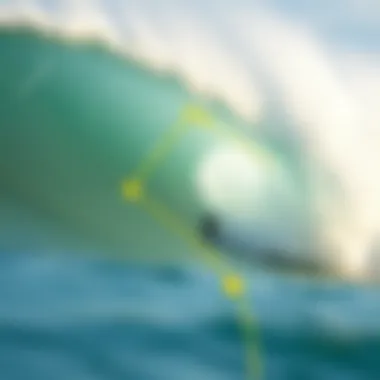
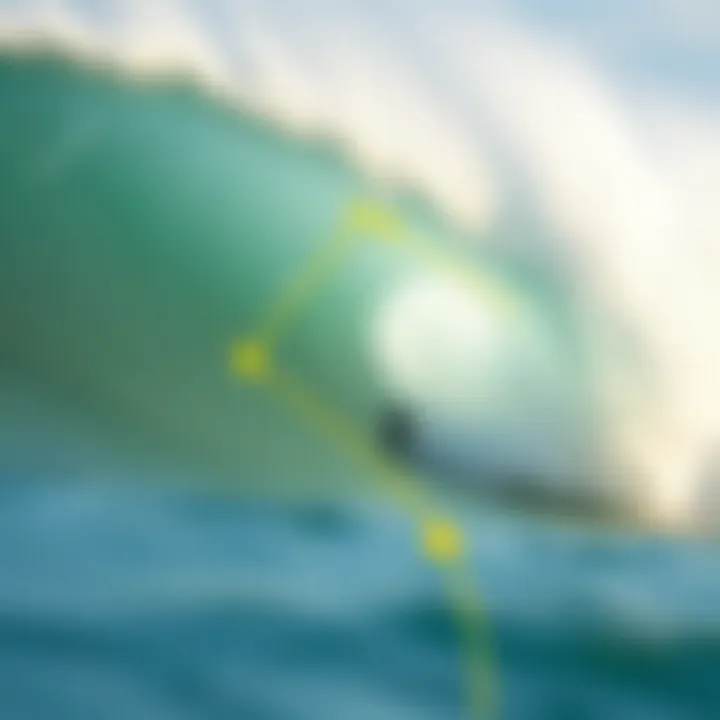
Wind Vanes: Simple Yet Effective
A wind vane is a less complex but equally valuable tool than an anemometer. These instruments point in the direction the wind is coming from and are often a fixture in many backyards and marinas. They usually consist of a rotating arm with a tail that catches the wind.
- Ease of Use: Wind vanes are straightforward to set up and maintain. They offer a visual representation of wind direction, which is particularly helpful when you're at the beach trying to get a quick sense of conditions. A quick glance at the wind vane gives surfers immediate information without needing to pull out a smartphone.
- Cost-Effectiveness: Compared to electronic solutions, wind vanes are often priced lower, making them accessible for anyone interested in tracking wind conditions. Plus, there's no battery to worry about. This reliability, combined with their low maintenance, makes them a good choice for surfers looking for consistent data.
Smartphone Apps for Wind Direction
In a tech-driven world, smartphone applications have become indispensable tools for surfers everywhere. There are various apps tailored to provide real-time wind data, surf reports, and even tide information, all crucial for surfers seeking the perfect wave.
- Popular Apps: Apps like Windy or Surfline have detailed forecasts specifically designed for surf conditions. They often provide not just wind speed and direction but also wave height and swell period, giving surfers a comprehensive snapshot of what to expect.
- Custom Notifications: Many of these applications allow users to set notifications for specific conditions. This feature can alert you when the wind is favorable for your preferred surf spots, ensuring you never miss a good swell.
"Understanding the wind is not just a preference in surfing; it's a necessity for success."
As surfers, the knowledge you gain from these instruments can improve your skills and your overall experience in the water. For further exploration into wind patterns and their influence on surfing, check out resources like National Weather Service and Surfline.com for comprehensive guides and real-time updates.
Interpreting Wind Patterns
Understanding wind patterns is crucial for surfers seeking the best waves. It’s not just about catching a swell; knowing how wind impacts water conditions can significantly influence the experience. Factors such as local geography, seasonal changes, and the relationship between global and local wind systems play pivotal roles in shaping the surf environment.
Local vs. Global Wind Systems
Local winds are like your neighborhood gossip, specifically affecting your immediate surroundings. These winds can shift throughout the day—often influenced by the terrain, temperature, and proximity to large bodies of water. For instance, a coastal region might experience offshore breezes during the early morning as the land cools rapidly, while the afternoon heat creates onshore winds that can chop up the waves.
On a larger scale, global wind systems influence weather patterns and, in turn, surf climates. Patterns such as the Trade Winds or westerlies create consistent conditions in certain oceans. They usually govern where and when surfable waves will form, impacting regions that surfers visit regularly. By understanding these dynamics, surfers can anticipate conditions before heading out.
Seasonal Wind Changes
Wind patterns aren't static; they change with the seasons. During winter months, many coastal regions experience stronger and more consistent winds. These winds can generate significant swells that are desirable for experienced surfers. Conversely, summer often brings lighter winds, leading to calmer water conditions that can be beneficial for beginners.
Surfers must recognize these shifts. For example, in many areas, the arrival of spring means transitioning winds, leading to the phenomenon known as spring swell. This shift, often accompanied by changing weather, can open up new surf spots, making it essential to keep one eye on the calendar and the other on the horizon.
Microclimates and Their Effects
Microclimates can be thought of as the little quirks of Mother Nature that can significantly impact surf conditions. A beach may experience wind patterns that differ dramatically just a few miles away due to local geographical features—like cliffs, lagoons, or tree lines. These elements can create sheltered areas with glassy, rideable waves, while nearby conditions may be drifty and unfriendly.
Some surfers become adept at recognizing their local microclimates. For example, while a headland may channel wind in a specific way, nearby coves might offer protection from the onslaught, creating favorable conditions. Understanding these idiosyncrasies can greatly enhance a surfer’s ability to select optimal spots on any given day.
"Knowledge of local wind patterns can be as beneficial as mastering techniques on the board. It turns a good day into a great day."
Geographical Influences on Wind Direction
When it comes to riding the waves, understanding how geographical factors play a role in wind direction is crucial. The terrain, environment, and features surrounding a surfing spot can significantly shape local wind patterns, affecting the quality and conditions of the surf. By grasping these influences, surfers can make more informed decisions about when and where to catch the best waves, ultimately enhancing their overall experience in the water.
Topography and Wind Flow
Topography is the lay of the land, and it makes a big difference on how wind flows. For instance, in coastal areas where hills and mountains rise abruptly next to the ocean, the wind interacts with these features in unique ways. When wind hits a hill or a mountain, it can either be deflected upward, causing turbulence, or it might funnel through valleys, which can intensify its speed.
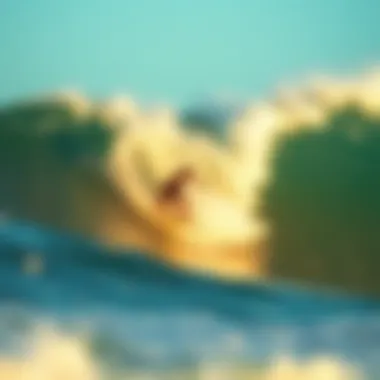
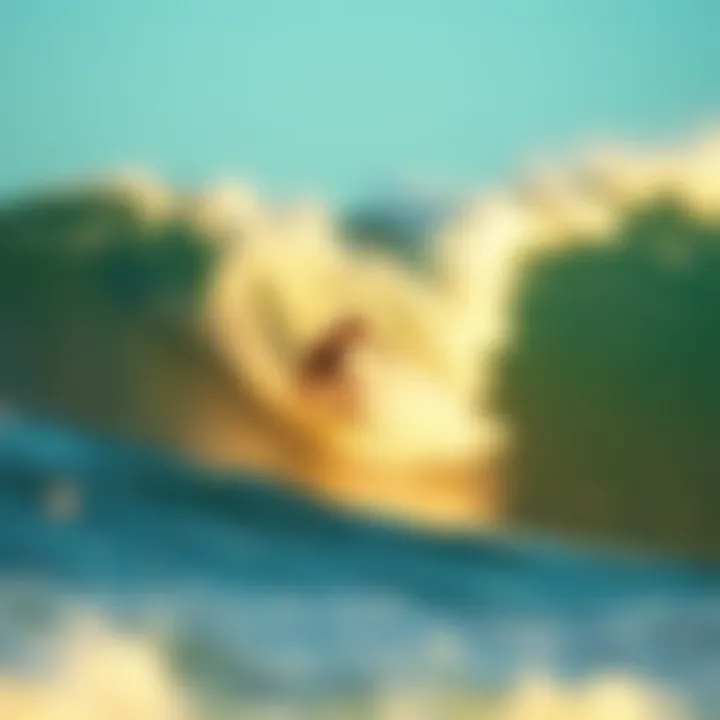
Surfers need to recognize that even small hills or dunes can change the wind direction just enough to impact wave quality.
Here are some key aspects of how topography affects wind flow:
- Obstruction and Refraction: Bumps in the landscape can disrupt the usual wind patterns, often creating unpredictable conditions in nearby waters.
- Sheltering Effects: Besides the obvious blocking of wind by high peaks, smaller hills can create sheltered zones—areas where wind is less intense, resulting in smoother surf.
- Updrafts and Downdrafts: In some cases, the topography can lead to strong vertical wind movements that surfers must be aware of, as these can create shifting wave conditions.
Coastal Features and Wind Patterns
Coastal features also dictate how winds behave. Sandbars, reefs, and estuaries can significantly affect wind patterns and the resulting wave formations. For example:
- Sandbars: When the wind blows over a sandbar, it can create ideal wave conditions by allowing swells to build up properly. The angle and height of these bars often dictate where the breaking waves will occur.
- Reefs: Surfing spots near reefs can have distinct wind patterns due to the way water flows over the shallow areas. Depending on the type of reef—whether it is a fringing or barrier reef—the waves can break differently based on the wind's influence.
- Estuaries: Where freshwater rivers meet saline ocean waters, the wind can interact with both bodies of water, affecting wave formation further out at sea. The winds may vary dramatically based on the time of year and the tides, leading surfers to explore different areas.
Understanding these coastal features is essential not just for catching the right waves, but also for safety considerations. Knowing how wind patterns change with local topographical features allows surfers to navigate hazards more effectively.
By learning to read the landscape and wind directions that result from it, surfers can uncover the hidden gems of their coastal adventures, optimizing their time on the water. For a deeper dive into geographical influences, check resources such as Britannica or explore engaging discussions on Reddit.
Understanding the integration of topography and coastal features provides surfers with a competitive edge. By paying closer attention to these elements, you ensure a more rewarding surfing experience, paving the way to thrilling rides and enjoyable time spent on the water.
Practicing Wind Direction Skills
Understanding wind direction is not just an academic exercise for surfers; it's a practical skill that requires regular practice and real-world application. Recognizing and interpreting wind patterns can significantly influence one’s surfing experience, enhancing both safety and performance. Engaging with this aspect of surfing equips surfers with the knowledge they need to maximize their time on the waves. Here, we will delve into techniques that can bolster your wind direction skills, ensuring you're not just relying on your gut but also utilizing your surroundings effectively.
On-the-Water Techniques
When you’re out there in the surf, wind direction can change in the blink of an eye. Here are some practical techniques to use while you’re on the water that will improve your ability to assess wind direction:
- Feel the Wind on Your Skin: Trust your senses! If the wind is fluttering against your face or back, you can deduce its direction. Familiarizing yourself with how the wind feels can help you align your movements and decisions, such as paddling or positioning on the wave.
- Observe Other Surfers: Keep an eye on where fellow surfers are positioning themselves. Often, experienced surfers have a good feel for the wind and will congregate in spots where the wind enhances wave quality. By following their lead, you can gain insights into optimal positioning and conditions.
- Use Landmarks as Reference Points: When you’re on the water, identifying coastal landmarks can provide clues about wind direction. If you have a favorite spot or a local surf break, begin to memorize how the wind hits those structures. Familiarity with your environment can turn instinctive intuition into a reliable method of assessing conditions.
Field Tests with Instruments
After getting a grip on the natural techniques, it's beneficial to incorporate some testing with instruments that can provide more accurate data regarding wind conditions. Here are two straightforward field tests that can enhance your understanding:
- Anemometer Tests: Use a portable anemometer to measure wind speed and direction when you’re at the beach. By taking readings at different times and conditions, you'll start to correlate your findings with the actual surfing experience you have at various spots.
- Wind Vane Assessment: A simple wind vane can offer insights into prevailing winds. Set up a wind vane at your surf spot, and take note of the wind direction over several days. Analyze how the changes impact your surfing conditions. It’s a hands-on way of learning that reinforces what you've noticed during your sessions on the water.
"The better you understand wind behavior, the more you appreciate the waves. Engaging with both nature and technology offers a rounded perspective, refining your skills as a surfer."
Practicing wind direction skills not only improves one's ability to surf but also cultivates a connection with the surrounding environment. Each technique and field test builds not just knowledge, but confidence in making informed decisions. Surfers who master these elements will see their surfing experiences elevate, riding wave after wave with a sense of intelligence and instinct.
For more resources on wind direction and surfing, consider exploring Wikipedia or Britannica. Insights from communities like Reddit can also provide personal anecdotes and tips, enhancing your learning journey.
Culmination
In the realm of surfing, understanding wind direction is not just an ancillary skill; it's foundational for anyone looking to harness the ocean’s power effectively. As explored throughout this guide, the nuances of wind patterns fundamentally influence wave formation and, subsequently, surfing conditions. Therefore, being aware of wind direction can greatly enhance your surfing experience and performance.
Applying Knowledge in Surfing
To transform theoretical knowledge into practical application, surfers need to commit the mechanics of wind direction to memory, alongside the local water conditions. When you approach the water, reflect on the winds you’ve studied and gauge them against the actual waves you see. Sometimes it's about feeling the breeze on your neck and knowing instantly which way the tide will turn. You might find it helpful to keep a small journal documenting your observations after each session. Record details like the wind's impact on wave height and quality. This approach not only reinforces your understanding but also fine-tunes your intuition about when and where to paddle out for the best conditions.
Continued Exploration and Learning
The journey doesn’t end with just knowing how to read the wind. To stay at the top of your game as a surfer, continual learning is key. Engage with local surf communities both online and offline. Websites like reddit.com/r/surfing can provide a treasure trove of real-time advice from fellow surf enthusiasts. Additionally, technology continues to evolve, offering new tools and applications for understanding wind and waves. Dive into forums, watch videos that analyze surf forecasts in your area, or perhaps attend some workshops or clinics. Embracing this evolving knowledge keeps you prepared for changing conditions and helps foster a deeper appreciation for the art of surfing and its relationship with nature.
"Knowledge is power, but it only becomes useful when applied."
By following these steps, surfers not only set themselves up for better waves but also cultivate a respectful relationship with the environment. As you continue to practice and refine your skills regarding wind direction, remember: each surf session is a learning opportunity, a chance to deepen your experience on the water.



